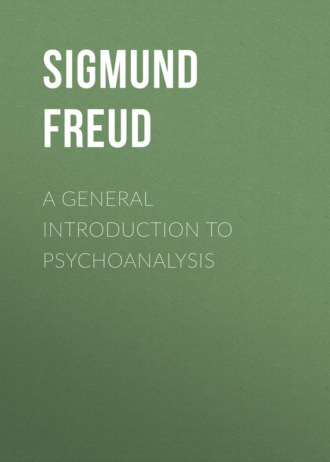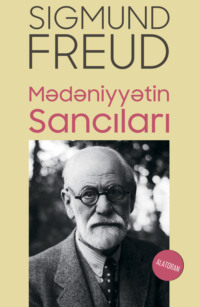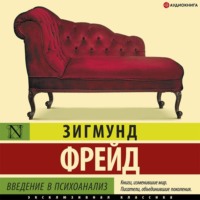 полная версия
полная версияA General Introduction to Psychoanalysis
I do not doubt that this was really his attitude toward his father during the latter's extended illness, and that his boastful assurances of filial piety were intended to distract his attention from these recollections. Under such circumstances, the death-wish directed toward the parent generally becomes active, and disguises itself in phrases of sympathetic consideration such as, "It would really be a blessed release for him." But note well that we have here overcome an obstacle in the latent dream thoughts themselves. The first part of these thoughts was surely unconscious only temporarily, that is to say, during the dream-work, while the inimical feelings toward the father might have been permanently unconscious, dating perhaps from childhood, occasionally slipping into consciousness, shyly and in disguise, during his father's illness. We can assert this with even greater certainty of other latent thoughts which have made unmistakable contributions to the dream content. To be sure, none of these inimical feelings toward the father can be discovered in the dream. But when we search a childhood history for the root of such enmity toward the father, we recollect that fear of the father arises because the latter, even in the earliest years, opposes the boy's sex activities, just as he is ordinarily forced to oppose them again, after puberty, for social motives. This relation to the father applies also to our dreamer; there had been mixed with his love for him much respect and fear, having its source in early sex intimidation.
From the onanism complex we can now explain the other parts of the manifest dream. "He looks badly" does, to be sure, allude to another remark of the dentist, that it looks badly to have a tooth missing in that place; but at the same time it refers to the "looking badly" by which the young man betrayed, or feared to betray, his excessive sexual activity during puberty. It was not without lightening his own heart that the dreamer transposed the bad looks from himself to his father in the manifest content, an inversion of the dream work with which you are familiar. "He goes on living since then," disguises itself with the wish to have him alive again as well as with the promise of the dentist that the tooth will be preserved. A very subtle phrase, however, is the following: "The dreamer does everything to prevent him (the father) from noticing the fact," a phrase calculated to lead us to conclude that he is dead. Yet the only meaningful conclusion is again drawn from the onanism complex, where it is a matter of course for the young man to do everything in order to hide his sex life from his father. Remember, in conclusion, that we were constantly forced to interpret the so-called tooth-ache dreams as dreams dealing with the subject of onanism and the punishment that is feared.
You now see how this incomprehensible dream came into being, by the creation of a remarkable and misleading condensation, by the fact that all the ideas emerge from the midst of the latent thought process, and by the creation of ambiguous substitute formations for the most hidden and, at the time, most remote of these thoughts.
4. We have tried repeatedly to understand those prosaic and banal dreams which have nothing foolish or repulsive about them, but which cause us to ask: "Why do we dream such unimportant stuff?" So I shall give you a new example of this kind, three dreams belonging together, all of which were dreamed in the same night by a young woman.
(a). "She it going through the hall of her house and strikes her head against the low-hanging chandelier, so that her head bleeds."
She has no reminiscence to contribute, nothing that really happened. The information she gives leads in quite another direction. "You know how badly my hair is falling out. Mother said to me yesterday, 'My child, if it goes on like this, you will have a head like the cheek of a buttock.'" Thus the head here stands for the other part of the body. We can understand the chandelier symbolically without other help; all objects that can be lengthened are symbols of the male organ. Thus the dream deals with a bleeding at the lower end of the body, which results from its collision with the male organ. This might still be ambiguous; her further associations show that it has to do with her belief that menstrual bleeding results from sexual intercourse with a man, a bit of sexual theory believed by many immature girls.
(b). "She sees a deep hole in the vineyard which she knows was made by pulling out a tree." Herewith her remark that "she misses the tree." She means that she did not see the tree in the dream, but the same phrase serves to express another thought which symbolic interpretation makes completely certain. The dream deals with another bit of the infantile sex theory, namely, with the belief that girls originally had the same genitals as boys and that the later conformation resulted from castration (pulling out of a tree).
(c). "She is standing in front of the drawer of her writing table, with which she is so familiar that she knows immediately if anybody has been through it." The writing-table drawer, like every drawer, chest, or box, stands for the female genital. She knows that one can recognize from the genital the signs of sexual intercourse (and, as she thinks, even of any contact at all) and she has long been afraid of such a conviction. I believe that the accent in all these dreams is to be laid upon the idea of knowing. She is reminded of the time of her childish sexual investigations, the results of which made her quite proud at the time.
5. Again a little bit of symbolism. But this time I must first describe the psychic situation in a short preface. A man who spent the night with a woman describes his partner as one of those motherly natures whose desire for a child irresistibly breaks through during intercourse. The circumstances of their meeting, however, necessitated a precaution whereby the fertilizing discharge of semen is kept away from the womb. Upon awaking after this night, the woman tells the following dream:
"An officer with a red cap follows her on the street. She flees from him, runs up the staircase, and he follows after her. Breathlessly she reaches her apartment and slams and locks the door behind her. He remains outside and as she looks through a peephole she sees him sitting outside on a bench and weeping."
You undoubtedly recognize in the pursuit by an officer with a red cap, and the breathless stair climbing, the representation of the sexual act. The fact that the dreamer locks herself in against the pursuer may serve as an example of that inversion which is so frequently used in dreams, for in reality it was the man who withdrew before the completion of the act. In the same way her grief has been transposed to the partner, it is he who weeps in the dream, whereby the discharge of the semen is also indicated.
You must surely have heard that in psychoanalysis it is always maintained that all dreams have a sexual meaning. Now you yourselves are in a position to form a judgment as to the incorrectness of this reproach. You have become acquainted with the wish-fulfillment dreams, which deal with the satisfying of the plainest needs, of hunger, of thirst, of longing for freedom, the dreams of convenience and of impatience and likewise the purely covetous and egoistic dreams. But that the markedly distorted dreams preponderantly – though again not exclusively – give expression to sex wishes, is a fact you may certainly keep in mind as one of the results of psychoanalytical research.
6. I have a special motive for piling up examples of the use of symbols in dreams. At our first meeting I complained of how hard it is, when lecturing on psychoanalysis, to demonstrate the facts in order to awaken conviction; and you very probably have come to agree with me since then. But the various assertions of psychoanalysis are so closely linked that one's conviction can easily extend from one point to a larger part of the whole. We might say of psychoanalysis that if we give it our little finger it promptly demands the whole hand. Anyone who was convinced by the explanation of errors can no longer logically disbelieve in all the rest of psychoanalysis. A second equally accessible point of approach is furnished by dream symbolism. I shall give you a dream, already published, of a peasant woman, whose husband is a watchman and who has certainly never heard anything about dream symbolism and psychoanalysis. You may then judge for yourselves whether its explanation with the help of sex symbols can be called arbitrary and forced.
"Then someone broke into her house and she called in fright for a watchman. But the latter had gone companionably into a church together with two 'beauties.' A number of steps led up to the church. Behind the church was a hill, and on its crest a thick forest. The watchman was fitted out with a helmet, gorget and a cloak. He had a full brown beard. The two were going along peacefully with the watchman, had sack-like aprons bound around their hips. There was a path from the church to the hill. This was overgrown on both sides with grass and underbrush that kept getting thicker and that became a regular forest on the crest of the hill."
You will recognize the symbols without any difficulty. The male genital is represented by a trinity of persons, the female by a landscape with a chapel, hill and forest. Again you encounter steps as the symbol of the sexual act. That which is called a hill in the dream has the same name in anatomy, namely, mons veneris, the mount of Venus.
7. I have another dream which can be solved by means of inserting symbols, a dream that is remarkable and convincing because the dreamer himself translated all the symbols, even though he had had no preliminary knowledge of dream interpretation. This situation is very unusual and the conditions essential to its occurrence are not clearly known.
"He is going for a walk with his father in some place which must be the Prater,35 for one can see the rotunda and before it a smaller building to which is anchored a captive balloon, which, however, seems fairly slack. His father asks him what all that is for; he wonders at it himself but explains it to his father. Then they come to a courtyard in which there lies spread out a big sheet of metal. His father wants to break off a big piece of it for himself but first looks about him to see if anyone might see him. He says to him that all he needs to do is to tell the inspector and then he can take some without more ado. There are steps leading from this courtyard down into a pit, the walls of which are upholstered with some soft material rather like a leather arm chair. At the end of this pit is a longish platform and then a new pit begins…"
The dreamer himself interprets as follows: "The rotunda is my genital, the balloon in front of it is my penis, of whose slackness I have been complaining." Thus one may translate in more detail, that the rotunda is the posterior – a part of the body which the child regularly considers as part of the genital – while the smaller building before it is the scrotum. In the dream his father asks him what all that is for; that is to say, he asks the object and function of the genitals. It is easy to turn this situation around so that the dreamer is the one who does the asking. Since no such questioning of the father ever took place in real life, we must think of the thought of this dream as a wish or consider it in the light of a supposition, "If I had asked father for sexual enlightenment." We will find the continuation of this idea in another place shortly.
The courtyard, in which the sheet metal lies spread out, is not to be considered primarily as symbolical but refers to the father's place of business. For reasons of discretion I have substituted the "sheet metal" for another material with which the father deals, without changing anything in the literal wording of the dream. The dreamer entered his father's business and took great offense at the rather dubious practices upon which the profits depended to a large extent. For this reason the continuation of the above idea of the dream might be expressed as "if I had asked him, he would only have deceived me as he deceives his customers." The dreamer himself gives us the second meaning of "breaking off the metal," which serves to represent the commercial dishonesty. He says it means masturbation. Not only have we long since become familiar with this symbol, but the fact also is in agreement. The secrecy of masturbation is expressed by means of its opposite – "It can be safely done openly." Again our expectations are fulfilled by the fact that masturbatory activity is referred to as the father's, just as the questioning was in the first scene of the dream. Upon being questioned he immediately gives the interpretation of the pit as the vagina on account of the soft upholstering of its walls. I will add arbitrarily that the "going down" like the more usual "going up" is meant to describe the sexual intercourse in the vagina.
Such details as the fact that the first pit ends in a platform and then a new one begins, he explains himself as having been taken from his own history. He practiced intercourse for a while, then gave it up on account of inhibitions, and now hopes to be able to resume it as a result of the treatment.
8. The two following dreams are those of a foreigner, of very polygamous tendencies, and I give them to you as proof for the claim that one's ego appears in every dream, even in those in which it is disguised in the manifest content. The trunks in the dream are a symbol for woman.
(a). "He is to take a trip, his luggage is placed on a carriage to be taken to the station, and there are many trunks piled up, among which are two big black ones like sample trunks. He says, consolingly, to someone, 'Well, they are only going as far as the station with us.'"
In reality he does travel with a great deal of luggage, but he also brings many tales of women with him when he comes for treatment. The two black trunks stand for two dark women who play the chief part in his life at present. One of them wanted to travel to Vienna after him, but he telegraphed her not to, upon my advice.
(b). A scene at the customs house: "A fellow traveler opens his trunk and says indifferently while puffing a cigarette, 'There's nothing in here.' The customs official seems to believe him but delves into the trunk once more and finds something particularly forbidden. The traveler then says resignedly, 'Well, there's no help for it.'"
He himself is the traveler, I the customs official. Though otherwise very frank in his confessions, he has on this occasion tried to conceal from me a new relationship which he had struck up with a lady whom he was justified in believing that I knew. The painful situation of being convicted of this is transposed into a strange person so that he himself apparently is not present in the dream.
9. The following is an example of a symbol which I have not yet mentioned:
"He meets his sister in company with two friends who are themselves sisters. He extends his hand to both of them but not to his sister."
This is no allusion to a real occurrence. His thoughts instead lead him back to a time when his observations made him wonder why a girl's breasts develop so late. The two sisters, therefore, are the breasts. He would have liked to touch them if only it had not been his sister.
10. Let me add an example of a symbol of death in a dream:
"He is walking with two persons whose name he knows but has forgotten. By the time he is awake, over a very high, steep iron bridge. Suddenly the two people are gone and he sees a ghostly man with a cap, and clad in white. He asks this man whether he is the telegraph messenger… No. Or is he a coachman? No. Then he goes on," and even in the dream he is in great fear. After waking he continues the dream by a phantasy in which the iron bridge suddenly breaks, and he plunges into the abyss.
When the dreamer emphasizes the fact that certain individuals in a dream are unknown, that he has forgotten their names, they are generally persons standing in very close relationship to the dreamer. This dreamer has two sisters; if it be true, as his dream indicates, that he wished these two dead, then it would only be justice if the fear of death fell upon him for so doing. In connection with the telegraph messenger he remarks that such people always bring bad news. Judged by his uniform he might also have been the lamp-lighter, who, however, also extinguishes the lamps – in other words, as the spirit of death extinguishes the flame of life. The coachman reminds him of Uhland's poem of King Karl's ocean voyage and also of a dangerous lake trip with two companions in which he played the role of the king in the poem. In connection with the iron bridge he remembers a recent accident and the stupid saying "Life is a suspension bridge."
11. The following may serve as another example of the representation of death in a dream: "An unknown man leaves a black bordered visiting card for him."
12. The following dream will interest you for several reasons, though it is one arising from a neurotic condition among other things:
"He is traveling in a train. The train stops in an open field. He thinks it means that there is going to be an accident, that he must save himself, and he goes through all the compartments of the train and strikes dead everyone whom he meets, conductors, engine drivers, etc."
In connection with this he tells a story that one of his friends told him. An insane man was being transported in a private compartment in a certain place in Italy, but through some mistake another traveler was put in the same compartment. The insane man murdered his fellow passenger. Thus he identifies himself with this insane person and bases his right so to do upon a compulsive idea which was then torturing him, namely, he must "do away with all persons who knew of his failings." But then he himself finds a better motivation which gave rise to the dream. The day before, in the theatre, he again saw the girl whom he had expected to marry but whom he had left because she had given him cause for jealousy. With a capacity for intense jealousy such as he has, he would really be insane if he married. In other words, he considers her so untrustworthy that out of jealousy he would have to strike dead all the persons who stood in his way. Going through a series of rooms, of compartments in this case, we have already learned to recognize as the symbol of marriage (the opposite of monogamy).
In connection with the train stopping in the open country and his fear of an accident, he tells the following: Once, when he was traveling in a train and it came to a sudden stop outside of a station, a young lady in the compartment remarked that perhaps there was going to be a collision, and that in that case the best precaution would be to pull one's legs up. But this "legs up" had also played a role in the many walks and excursions into the open which he had taken with the girl in that happy period in their first love. Thus it is a new argument for the idea that he would have to be crazy in order to marry her now. But from my knowledge of the situation I can assume with certainty that the wish to be as crazy as that nevertheless exists in him.
THIRTEENTH LECTURE
THE DREAM
Archaic Remnants and Infantilism in the DreamLET us revert to our conclusion that the dream-work, under the influence of the dream censorship, transforms the latent dream thoughts into some other form of expression. The latent thoughts are no other than the conscious thoughts known to us in our waking hours; the new mode of expression is incomprehensible to us because of its many-sided features. We have said it extends back to conditions of our intellectual development which we have long progressed beyond, to the language of pictures, the symbol-representations, perhaps to those conditions which were in force before the development of our language of thought. So we called the mode of expression of the dream-work the archaic or regressive.
You may conclude that as a result of the deeper study of the dream-work we gain valuable information about the rather unknown beginnings of our intellectual development. I trust this will be true, but this work has not, up to the present time, been undertaken. The antiquity into which the dream-work carries us back is of a double aspect, firstly, the individual antiquity, childhood; and, secondly (in so far as every individual in his childhood lives over again in some more or less abbreviated manner the entire development of the human race), also this antiquity, the philogenetic. That we shall be able to differentiate which part of the latent psychic proceeding has its source in the individual, and which part in the philogenetic antiquity is not improbable. In this connection it appears to me, for example, that the symbolic relations which the individual has never learned are ground for the belief that they should be regarded as a philogenetic inheritance.
However, this is not the only archaic characteristic of the dream. You probably all know from your own experiences the peculiar amnesia, that is, loss of memory, concerning childhood. I mean the fact that the first years, to the fifth, sixth or eighth, have not left the same traces in our memory as have later experiences. One meets with individual persons, to be sure, who can boast of a continuous memory from the very beginning to the present day, but the other condition, that of a gap in the memory, is far more frequent. I believe we have not laid enough stress on this fact. The child is able to speak well at the age of two, it soon shows that it can become adjusted to the most complicated psychic situations, and makes remarks which years later are retold to it, but which it has itself entirely forgotten. Besides, the memory in the early years is more facile, because it is less burdened than in later years. Nor is there any reason for considering the memory-function as a particularly high or difficult psychic performance; in fact, the contrary is true, and you can find a good memory in persons who stand very low intellectually.
As a second peculiarity closely related to the first, I must point out that certain well-preserved memories, for the most part formatively experienced, stand forth in this memory-void which surrounds the first years of childhood and do not justify this hypothesis. Our memory deals selectively with its later materials, with impressions which come to us in later life. It retains the important and discards the unimportant. This is not true of the retained childhood memories. They do not bespeak necessarily important experiences of childhood, not even such as from the viewpoint of the child need appear of importance. They are often so banal and intrinsically so meaningless that we ask ourselves in wonder why just these details have escaped being forgotten. I once endeavored to approach the riddle of childhood amnesia and the interrupted memory remnants with the help of analysis, and I arrived at the conclusion that in the case of the child, too, only the important has remained in the memory, except that by means of the process of condensation already known to you, and especially by means of distortion, the important is represented in the memory by something that appears unimportant. For this reason I have called these childhood memories "disguise-memories," memories used to conceal; by means of careful analysis one is able to develop out of them everything that is forgotten.
In psychoanalytic treatment we are regularly called upon to fill out the infantile memory gaps, and in so far as the cure is to any degree successful, we are able again to bring to light the content of the childhood years thus clouded in forgetfulness. These impressions have never really been forgotten, they have only been inaccessible, latent, have belonged to the unconscious. But sometimes they bob up out of the unconscious spontaneously, and, as a matter of fact, this is what happens in dreams. It is apparent that the dream life knows how to find the entrance to these latent, infantile experiences. Beautiful examples of this occur in literature, and I myself can present such an example. I once dreamed in a certain connection of a person who must have performed some service for me, and whom I clearly saw. He was a one-eyed man, short in stature, stout, his head deeply sunk into his neck. I concluded from the content that he was a physician. Luckily I was able to ask my mother, who was still living, how the physician in my birth-place, which I left when I was three years old, looked, and I learned from her that he had one eye, was short and stout, with his head sunk into his neck, and also learned at what forgotten mishap he had been of service to me. This control over the forgotten material of childhood years is, then, a further archaic tendency of the dream.











